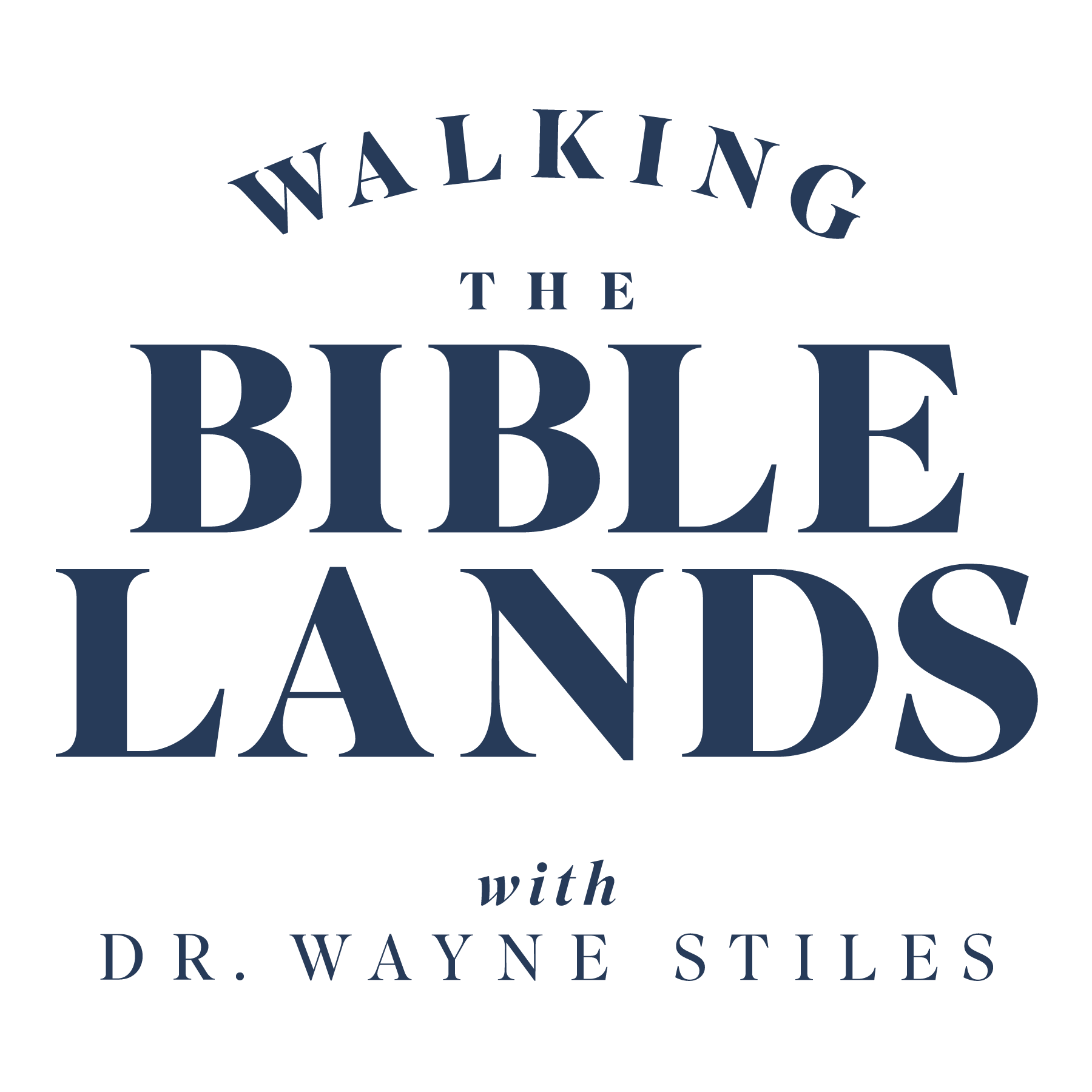2 min read
Jesus’ Triumphal Entry That Wasn’t
Jerusalem's Palm Sunday Road Reveals Two Eternal Paths.
Admin
:
Mar 7, 2021 9:33:30 PM
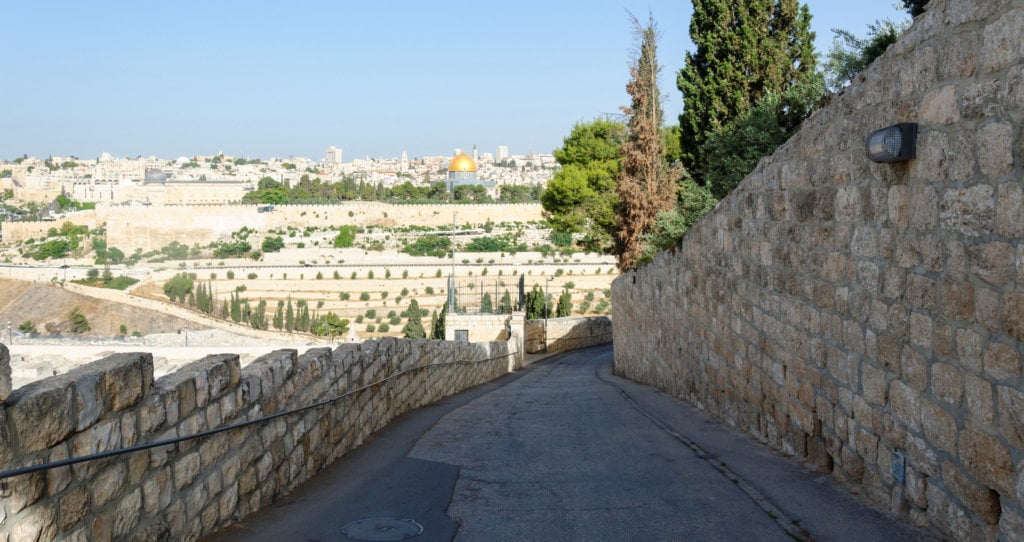
What difference can a narrow road make? Whenever I make my way down the Mount of Olives, I can’t help but think about Jesus’ riding down that slope on the back of a donkey early in His Passion Week.
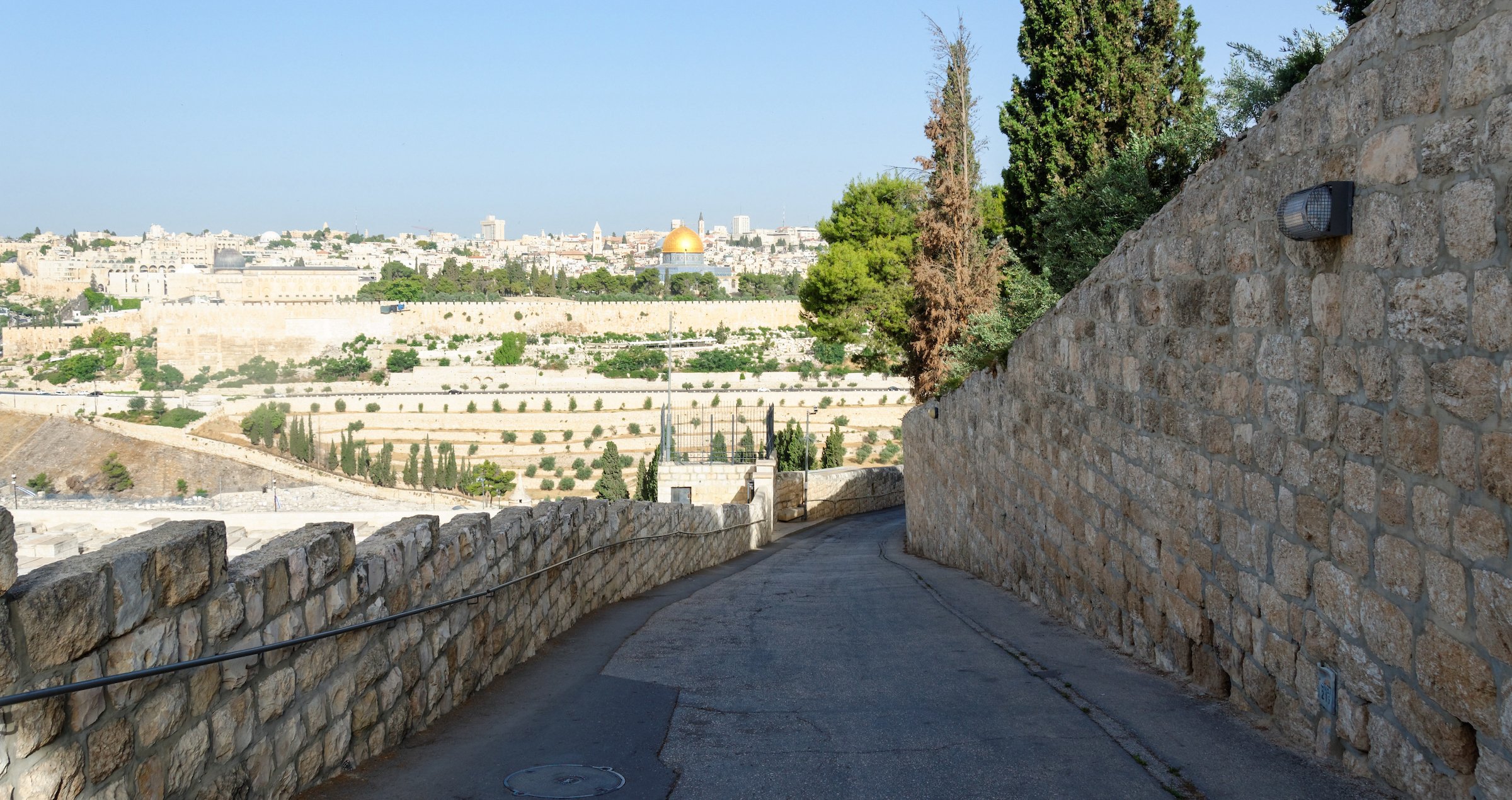
(Photo: Palm Sunday Road down the Mount of Olives. Courtesy of the Pictorial Library of Bible Lands)
His words that day hardly seemed fitting for a “Triumphal Entry.” When Jesus saw Jerusalem, He wept over it:
If you had known in this day, even you, the things which make for peace! But now they have been hidden from your eyes. —Luke 19:42
Why did Jesus say, “This day”?
He didn’t simply mean “today.” The prophet Daniel had penned a meticulous prediction of the very day when the Messiah would appear in Jerusalem.
It was that very day.
The Dominus Flevit Church—The Lord Wept
The sharp descent of the Mount of Olives follows a narrow road with high walls on either side.
The high wall to the right encloses the grounds of the Dominus Flevit Church. The chapel and its name memorialize the moment the Lord wept over Jerusalem (Luke 19:41). The roof of the quaint chapel resembles the shape of an inverted teardrop.
Inside the chapel, the altar on the right has a large, arced window that frames the city of Jerusalem.
- The window’s decorative wrought iron bars depict elements of Jesus’ Passion Week—a cup, a loaf, thorns, and a cross.
- The capstone above the window supports a stone relief of Jesus riding a donkey with His face in His hands.
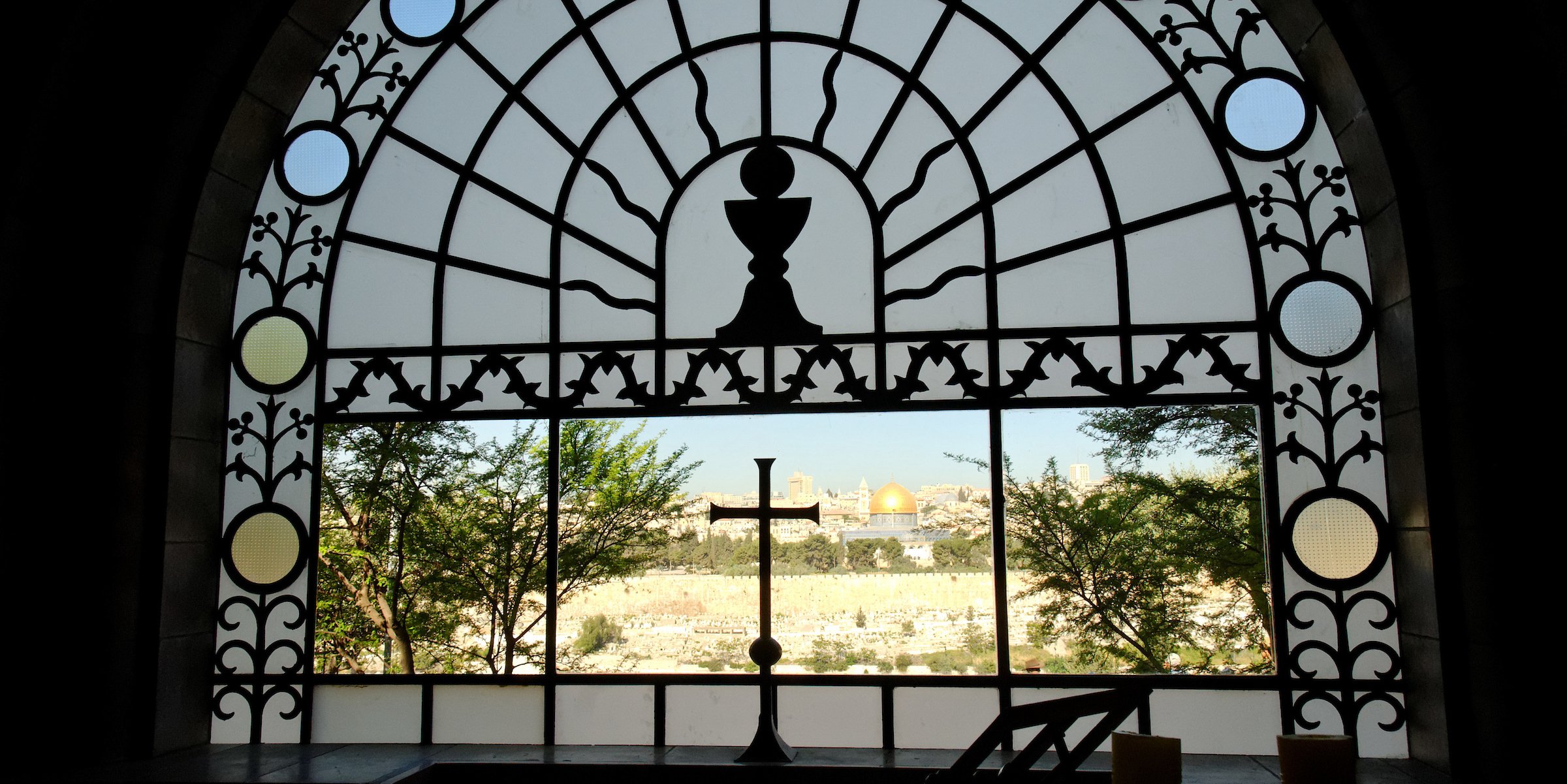
(Photo: Jerusalem from Dominus Flevit chapel window. Courtesy of the Pictorial Library of Bible Lands)
Staring out the window at the city over which the Lord wept, I felt as though I gazed through a porthole of time.
I could not see Jerusalem without also seeing the cross. Neither could Jesus.
Daniel’s Prediction—The Triumphal Entry Missed
Daniel foretold that exactly 483 Jewish years—or 476 Gregorian years—from the rebuilding of Jerusalem in March 444 B.C., “Messiah the Prince” would appear (Daniel 9:25).
If the religious leaders had taken seriously Daniel’s challenge “to know and discern” the timing (Daniel 9:25), the Passion Week would have gone much differently. Jesus could have topped the hill in March of A.D. 33 to see a banner draped over the walls of Jerusalem: “Welcome, Messiah!”
Instead, the leaders rebuked the notion (Luke 19:39).
A Graveyard of Hope
Leaving the walls of the Dominus Flevit Church to continue down the Mount, there’s another high wall on the other side of the road, overlooking a vast Jewish graveyard.
- Literally thousands of white tombs on that hillside give testimony to the Jewish belief that the Messiah has not yet come—and the hope that when He does, “His feet will stand on the Mount of Olives” (Zechariah 14:4), and those buried there will stand first in line for blessing.
- Although the Messiah will raise all people from these graves, not everyone resurrected will rejoice in His presence (Daniel 12:2; Revelation 20:11–15).
- Where our physical bodies rest does not ensure our salvation. Jesus’ words to Nicodemus remain God’s standard for entrance into His kingdom: “‘You must be born again’” (John 3:7).
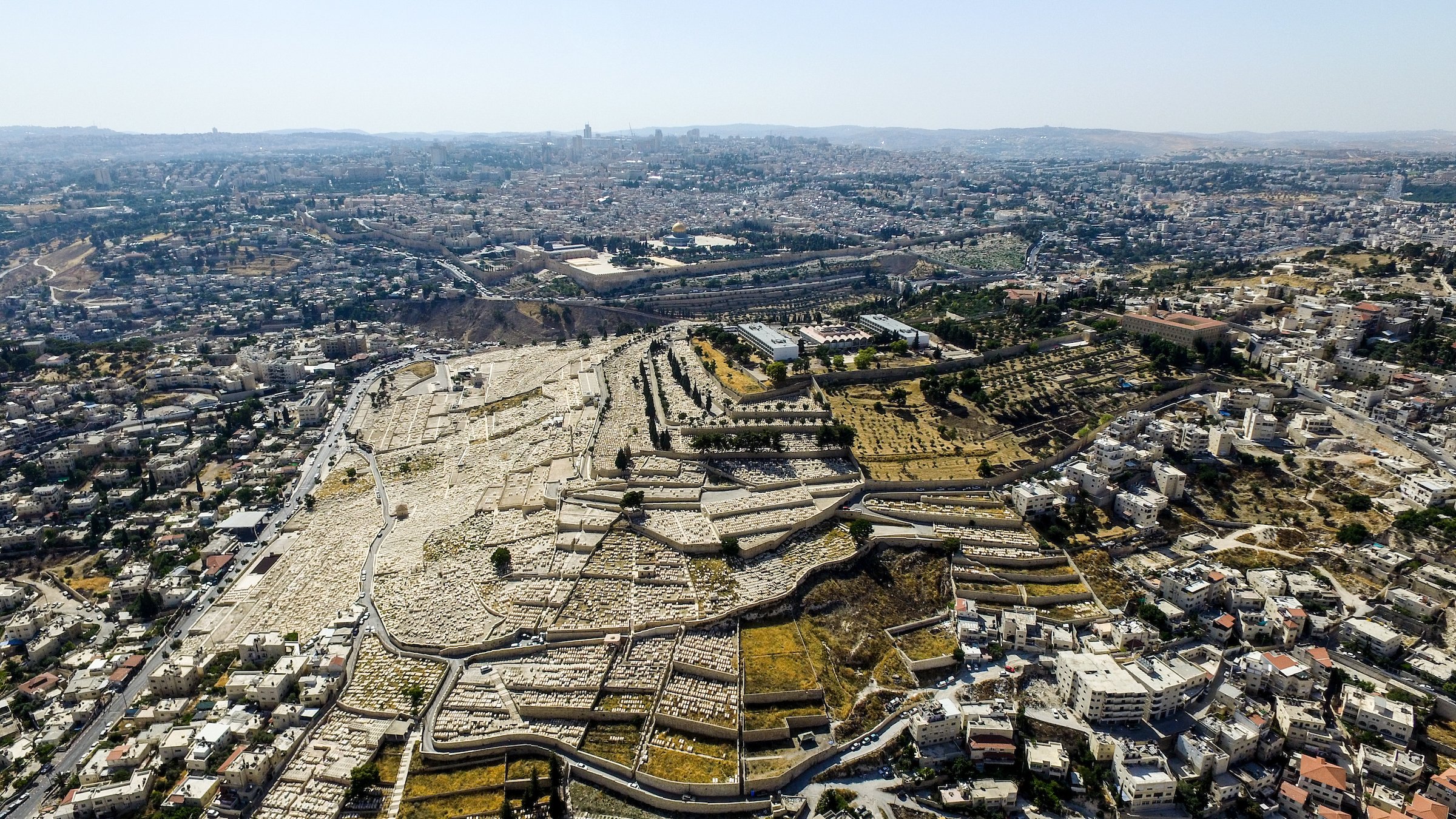
(Photo: Mount of Olives Cemetery. Courtesy of the Pictorial Library of Bible Lands)
The Contrast behind the Walls
I marvel at the contrast of these two sides of the road that descends the Mount of Olives. They capture the responses Jesus received early in His Passion Week, making His way down this same slope to the cross for us.
- On one side, the high wall around the cemetery guards the hope that the Messiah will come one day.
- On the other side, the high wall around the Dominus Flevit Church guards the belief that He has already come—but was rejected.
Only a narrow, steep road separates these two walls.
But the distance between them is eternal.
Tell me what you think: What stands out to you about Jesus’ ‘Triumphal Entry’? To leave a comment, just click here.
Click here to leave a comment.
-1.png?width=5230&height=1198&name=unnamed%20(4)-1.png)

.jpg?width=350&name=Wayne-books-350wide%20(1).jpg)



